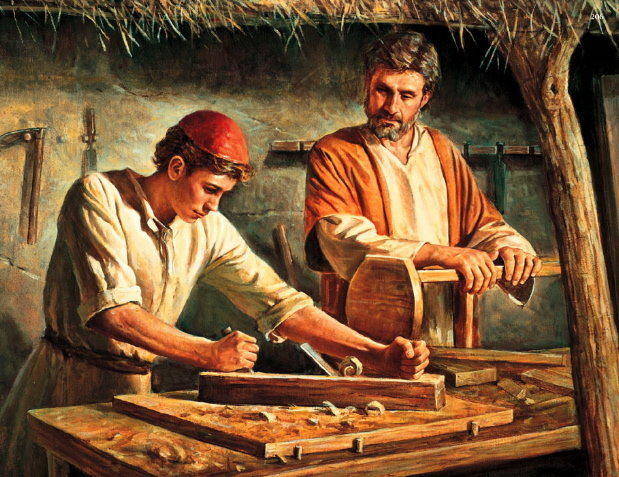There's no denying that wood is inanimate and, although it was once a growing, living thing, it is quite content to allow the woodworker to cut, plane, drill, whittle or whatever until it becomes the proper shape and size to do what is needed. The difficulty arises when we fail to take into account the very nature of wood itself. Working wood requires that one thinks like a piece of wood. That's not quite as silly as it first sounds. What is that piece of wood going to do if I try to chisel out a groove in that place? is the kind of question we ask as we begin to think like a piece of wood. Knowing how a piece of wood thinks is not unlike considering how people think and just like people, different pieces of wood may think quite differently from another. Some wood is harder than others. Some is more split resistant. Some is better at being glued together. Being familiar with the wood with which we work enables us to come to think like the wood.
It would appear that there is an analogy here in thinking like another person. Heaven knows, we have some real difference of thought right now in the people we encounter. Working with another person closely enough to think the way they think is essential if we hope to have civil discourse about matters of which we think differently. We are all rather quick to let one another know, "what I think". Being effective in human relations is quite a bit like woodworking in that until we take the time to know others and "what they think" and, more importantly, why they think that, especially, if their thoughts differ from our own, we are left with a pile of splinters.
Each of us has come into being and have what we have by the grace of our Creator. If we believe that we are loved by that Creator to the extent that He sacrificed His Son for us and that the Son is the only example of how we are to live, then we owe it to one another to think like one another. Being a carpenter, Jesus knew how to think like a piece of wood. More importantly, He knew how to think like the people he encountered. We have been charged to love one another. That can not happen unless we become familiar enough with one another to think like one another and agreeing to seek His righteousness
.
